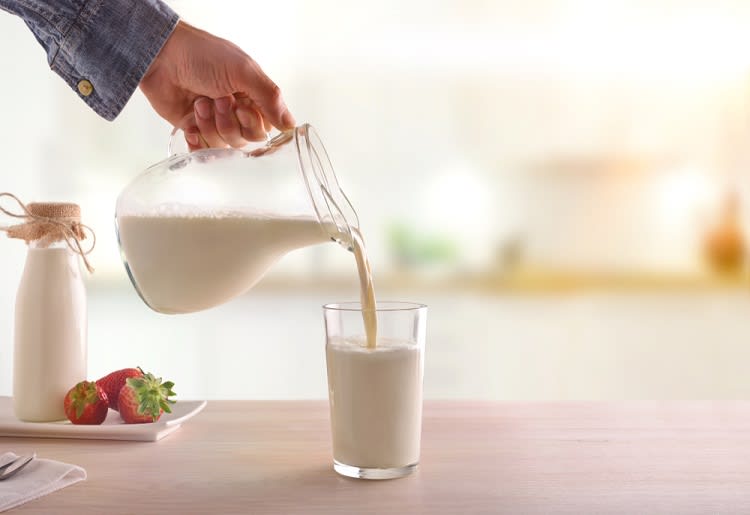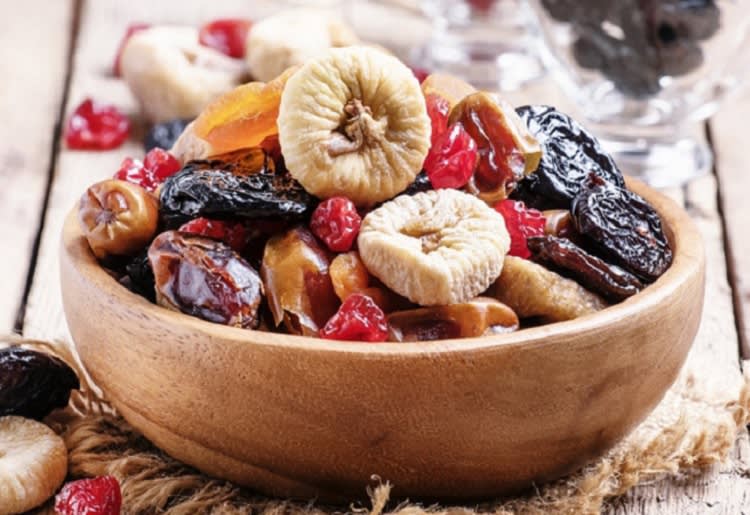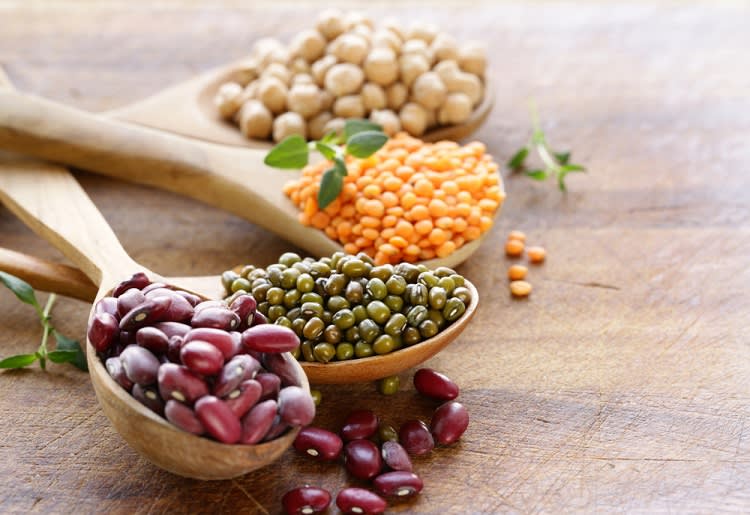Low-carb diets are associated with faster weight loss and improved blood sugar control. On a low-carb diet, you need to limit your carb intake to about 20–130 grams per day. Staying under 30 to 50 grams can help you achieve ketosis and lose weight even faster.
Here are 10 foods to avoid on a low-carb diet and plenty of ideas on what you can have instead.
» Don't have much time to cook? Check out our top picks for the best meal kit delivery services and companies.
1. Milk
Milk is an excellent source of nutrients, but it is high in carbs. Just 240 ml of low-fat milk contains about 13 grams of carbs. Dairy products such as cottage cheese and ricotta cheese are also high in carbs.
Thankfully, some cheeses can be enjoyed on a low-carb diet. Halloumi cheese, feta, brie, Gruyere, cheddar, and parmesan contain up to 1 gram of net carbs per ounce. You can still have a tablespoon or two of full-fat milk in your coffee, but using a cup of coconut or almond milk for smoothies and milkshakes is better.

2. Fruit and Vegetable Juices
Green juice for detoxification and fruity smoothies after a workout are good for your health. However, if a low-carb diet is your goal, then these should definitely stay off the menu.
There are around 42 grams of carbs per 12 ounces of apple juice and 55 grams per 12 ounces of grape juice. Vegetable juices are generally lower in carbs compared to fruit juices, but it's best to eat the veggies as you can enjoy the benefits of dietary fiber as well.
Eating whole fruits and vegetables reduces the net carbs, and your body absorbs the carbs at a much slower rate. There are plenty of low-carb fruits available, such as berries and avocados.
» Are you vegetarian? Check out our favorite vegetarian meal delivery services.
3. Beer
Many people drink beer on a low-carb diet, not knowing that it is quite high in carbs. Beer is a definite no on a keto diet, as it can kick you out of ketosis. A 12-ounce beer has around 13 grams of carbs, while a light beer has 6 grams.
In comparison, hard liquors and dry wine have little to no carbs. These can be enjoyed in moderation on a low-carb diet. However, it is best to avoid alcohol while on a diet, as they are low in protein, fiber, vitamins, and minerals.
4. Honey
Even though people stop consuming sugar on a low-carb diet, many people use maple syrup, agave nectar, and honey, thinking these are healthier. However, these actually contain a lot of simple carbs that work against you in a low-carb diet.
A tablespoon of honey has 17 grams of carbs, and maple syrup has 13 grams. These foods are high in carbs and low in other nutrients. If you crave something sweet, opt for low-carb sweeteners such as stevia or monk fruit, which are also keto-friendly.
» Want to try the keto diet? Check out these keto tips for beginners.
5. Dried Fruits
You may think dried fruits are nutritious, but water loss increases the sugar content to quite an extent. In reality, dried fruits contain more sugar than fresh fruit. Sometimes, sugar and artificial flavors are added to make them tastier.
While on a low-carb diet, have fresh fruits instead of dry ones. Strawberries, blackberries, cantaloupes, and peaches are low in net carbs and absolutely delicious.

6. High-Carb Vegetables
Although vegetables are a healthy addition to your diet, there are some vegetables you need to avoid if your aim is to stay on a low-carb diet. Starchy vegetables have a high glycemic load. Try to avoid potatoes, sweet potatoes, peas, corn, beets, squash, beans, and yam.
For a low-carb lifestyle, choose green leafy vegetables that grow above the ground. Spinach, tomatoes, and mushrooms are low-starch vegetables that are keto-friendly. These veggies keep you fuller for longer, so you can eat them in bigger portions.
» Not satisfied after eating? Try these filling low-carb foods.
7. Beans and Legumes
Although beans make for a healthy addition to your diet, they are also high in carbs. Black-eyed peas, chickpeas, pinto beans, and lima beans have more net carbs than others. Considering they are also high in fiber, you can still enjoy them in small quantities on a low-carb diet.
You can have black soybeans, which are highly nutritious but low in carbs. Another option is to substitute beans with mushrooms, avocado, eggplant, or meat.

8. Sweetened Yogurt
Even though yogurt has live organisms that are great for gut health, flavored and artificially sweetened yogurts are best avoided on a low-carb diet. A standard cup of low-fat sweetened yogurt has about 45-50 grams of carbs. That's higher than the carbs in a cup of ice cream, which is only around 35 grams (1).
Opt for plain and unsweetened Greek yogurt. Top it with berries and nuts of your choice. Stir in chia seeds and some cocoa to make chocolate chia pudding. If you still want some sweetness, use stevia or monk fruit instead of sugar.
» Give these sugar-free snack ideas a try.
9. Breakfast Cereals
With the processing they go through, breakfast cereals barely contain any fiber or nutrients. Breakfast cereals are sugary, carb-based processed foods that should be avoided in a low-carb diet.
If you love breakfast cereal, look for sugar-free variations. You can make your own granola at home with rolled oats, nuts, seeds, and honey. Toss them with a little honey or jaggery for sweetness, and mix with a little butter or olive oil. Bake for half an hour, and add some cranberries, blueberries, and dried apricots once cooled.
10. Low-Fat Products
Studies showed that natural fats in food are good for your health (2). Low-fat foods tend to be high in carbs. Low-fat, carb-based foods get used up quickly by the body and leave you wanting even more food. Plus, manufacturers often add plenty of sugar to make low-fat foods taste good.
High-fat foods keep you satiated, which in turn, reduces your overall food intake. Fatty fish, avocadoes, cheese, and nuts are all filling low-carb foods. They keep you full for longer while providing plenty of nutrition.
» Add these healthy fat sources to your keto diet.

Take Away
When it comes to burning fat and staying in ketosis, your carb intake decides whether your body can get into that mode. The higher your carb intake, the lower your chance of attaining ketosis. Therefore, a low-carb diet is the best way to get the required metabolism and reap the benefits.
Meal delivery services such as Blue Apron and HelloFresh have an excellent selection of low-carb meals for you to choose from. The best prepared meal delivery services deliver ready-to-eat low-carb meals to your doorstep.
» Learn more about the difference between strict and lazy keto.

